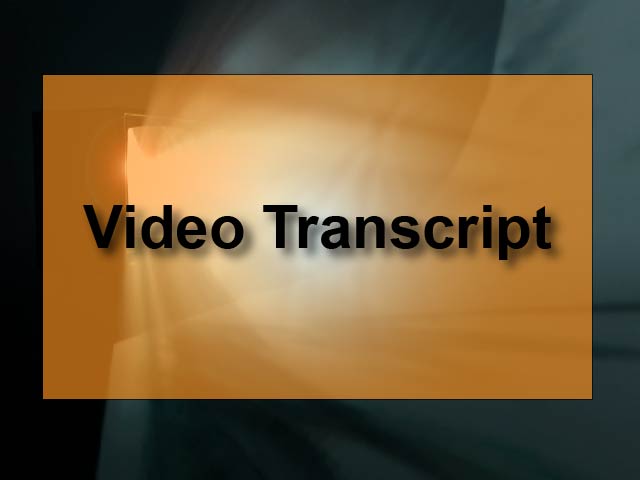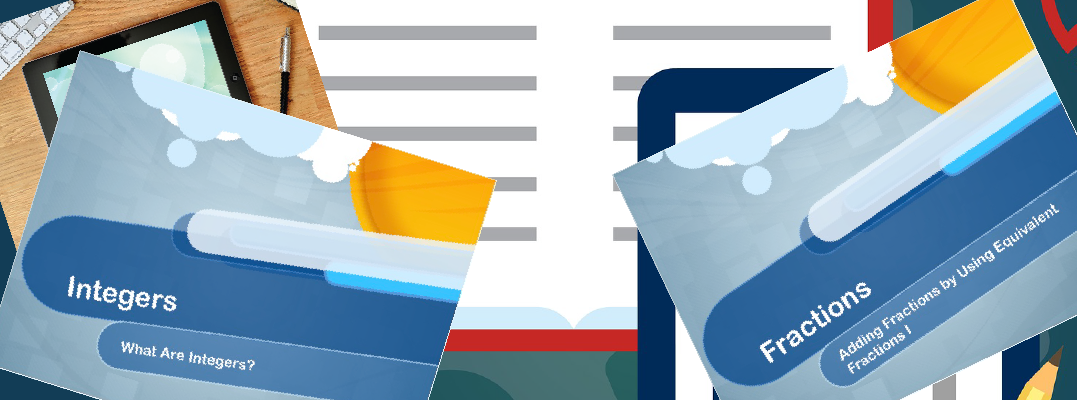Content Showcase: Video Transcripts
Media4Math has video transcripts for many of our videos. When you subscribe to Media4Math, you can download these transcripts.
This is a growing collection of resources, so keep coming back!
(Want to learn more about our subscription packages? Click here.)
| Title | Description | Thumbnail Image | Curriculum Topics |
|---|---|---|---|
Video Transcript: Geometry Applications: Coordinate Geometry, Segment 2: Rectangular Coordinates |
Video Transcript: Geometry Applications: Coordinate Geometry, Segment 2: Rectangular CoordinatesThis is the transcript for the video of same title. Video contents: Centuries ago a Spanish galleon, The Atocha, sank off the coast of Florida, taking its gold treasure down with it. Aside from the technology used to recover the treasure, it was a rectangular coordinate system that made such an endeavor possible. |

|
Applications of Coordinate Geometry |
Video Transcript: Geometry Applications: Coordinate Geometry, Segment 3: Polar Coordinates. |
Video Transcript: Geometry Applications: Coordinate Geometry, Segment 3: Polar Coordinates.This is the transcript for the video of same title. Video contents: The Guggenheim Museum in New York City has a spiral shape that is an example of a polar coordinate graph. This shape, found often in nature, is a way to understand the Fibonacci Sequence. |

|
Applications of Coordinate Geometry |
Video Transcript: Geometry Applications: Points and Lines |
Video Transcript: Geometry Applications: Points and LinesThis is the transcript for the video of same title. Video contents: In this program we explore the properties of points and lines. We do this in the context of two real-world applications. In the first, we go to CERN and learn about the Large Hadron Collidor. We look at how points can represent particle positions in space and look at properties of points and lines. In the second application we investigate the properties of lines in the context of city grids. |

|
Applications of Points and Lines |
Video Transcript: Geometry Applications: Points and Lines, Segment 1: Introduction |
Video Transcript: Geometry Applications: Points and Lines, Segment 1: IntroductionThis is the transcript for the video of same title. Video contents: Our understanding of geometry owes much to the ancient Greeks. We visit the ancient Acropolis and explore some of its geometric secrets. |

|
Applications of Points and Lines |
Video Transcript: Geometry Applications: Points and Lines, Segment 2: Points |
Video Transcript: Geometry Applications: Points and Lines, Segment 2: PointsThis is the transcript for the video of same title. Video contents: Geometric objects are abstractions that seem to have a connection to real world objects. In the case of a geometric point, we visit the CERN particle accelerator in Switzerland, where the smallest known subatomic particles are produced, to see how subatomic particles compare to geometric points. A mathematical analysis reveals the nature of geometric points and point-like materials objects. |

|
Applications of Points and Lines |
Video Transcript: Geometry Applications: Points and Lines, Segment 3: Lines |
Video Transcript: Geometry Applications: Points and Lines, Segment 3: LinesThis is the transcript for the video of same title. Video contents: Many cities are laid out in a rectangular grid and are examples of intersecting lines and rays. We visit the city of Houston to investigate the geometric nature of the city grid in its downtown area. We explore properties of intersecting and parallel lines and why this is the most efficient way to organize a city or community. |

|
Applications of Points and Lines |
Video Transcript: Geometry Applications: Polygons |
Video Transcript: Geometry Applications: PolygonsThis is the transcript for the video of same title. Video contents: In this program we explore the properties of polygons. We do this in the context of two real-world applications. In the first, we look at Islamic tile patterns as examples of regular polygons. We explore how such intricate patterns were created using a compass and straight edge. In the second application we look at composite figures, specifically in the context of the design of the Petronas Towers in Indonesia. |

|
Applications of Polygons |
Video Transcript: Geometry Applications: Polygons, Segment 1: Introduction |
Video Transcript: Geometry Applications: Polygons, Segment 1: IntroductionThis is the transcript for the video of same title. Video contents: The Pentagon is one of the most famous polygon-shaped buildings in the world. But why was this shape chosen over a more straightforward quadrilateral shape? We briefly explore the properties of pentagons and use this as a way of introducing the key concepts throughout the program. |

|
Applications of Polygons |
Video Transcript: Geometry Applications: Polygons, Segment 2: Properties of Polygons |
Video Transcript: Geometry Applications: Polygons, Segment 2: Properties of PolygonsThis is the transcript for the video of same title. Video contents: In the ancient city of Marrakesh polygons are on display. As part of the Islamic tile work prevalent throughout the Middle Ages, Marrakesh provides an opportunity to explore the properties of polygons, and how these properties are taken advantage of in the intricate designs found throughout this fascinating city. |

|
Applications of Polygons |
Video Transcript: Geometry Applications: Polygons, Segment 3: Composite Figures |
Video Transcript: Geometry Applications: Polygons, Segment 3: Composite FiguresThis is the transcript for the video of same title. Video contents: The Petronas Towers in Indonesia provide an opportunity to explore the composite shapes used in the design of the towers. |

|
Applications of Polygons |
Video Transcript: Geometry Applications: Quadrilaterals |
Video Transcript: Geometry Applications: QuadrilateralsThis is the transcript for the video of same title. Video contents: In this program we explore the properties of quadrilaterals. We do this in the context of two real-world applications. In the first, we explore the architecture of Frank Lloyd Wright as an application of squares and rectangles; in particular, we look at his Fallingwater house. In the second application we look at a unique parallelogram-shaped building in Spain, known as the Puerta de Europa. |

|
Applications of Quadrilaterals |
Video Transcript: Geometry Applications: Quadrilaterals, Segment 1: Introduction |
Video Transcript: Geometry Applications: Quadrilaterals, Segment 1: IntroductionThis is the transcript for the video of same title. Video contents: Stonehenge is best known as a circular structure. But it's the post and lintel construction used that is noteworthy, and this type of construction involves quadrilateral shapes. From the familiar door frames of houses to the majestic entryways of ancient temples, post and lintel construction provides a clear introduction to the nature of quadrilaterals. |

|
Applications of Quadrilaterals |
Video Transcript: Geometry Applications: Quadrilaterals, Segment 2: Squares and Rectangles |
Video Transcript: Geometry Applications: Quadrilaterals, Segment 2: Squares and RectanglesThis is the transcript for the video of same title. Video contents: Frank Lloyd Wright's architectural masterpiece Falling Water is also a stunning assembly of quadrilateral shapes. Some of the rectangular forms in this building seem to defy gravity, as we explore the properties of squares and rectangles that allowed Frank Lloyd Wright to push the envelope of design and structure. |

|
Applications of Quadrilaterals |
